Getting the perfect home is not a day job, it takes various steps in the construction process until you achieve your dream home. Among those construction steps, the exterior finishing is one to draw up a few questions.
Basically, the exterior finishing of a home acts like the first line of defense in a home. Protecting the house from all the outside elements and adding to the aesthetics of the home.
More than one material can be used to finish the exterior of a home. To help you decide which finish to go with, I will write on the various types, along with their pros and cons.
What are exterior finishes?
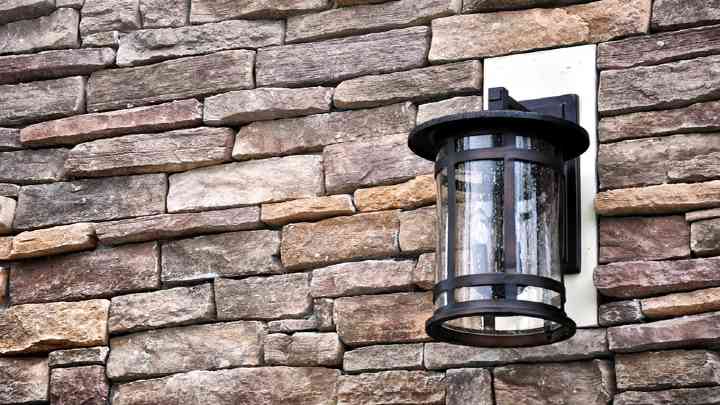
Exterior finishes are materials or claddings that are used to protect the outside or exterior of a house or a building.
These materials offer both ornamental and decorative appeal to a building’s surface.
They also provide a protective cladding that shields the building’s components from natural elements. This includes; heat, moisture, frost, wind, etc.
Types of Exterior Finishing
There are many types of exterior finishing, from stucco to wood to vinyl, and so on. Let’s outline and explain them, along with their pros and cons.
1. Vinyl Siding
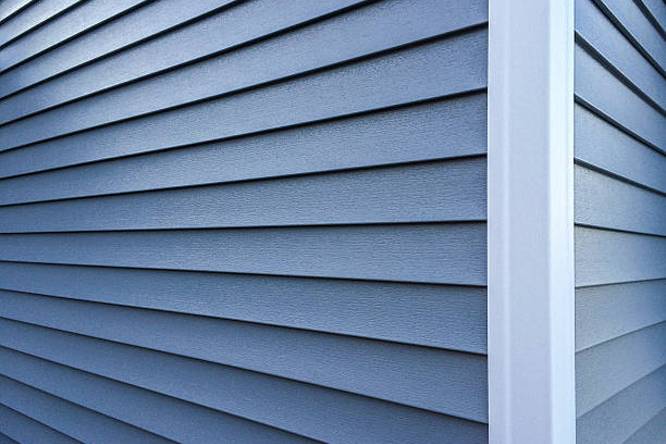
Vinyl is one of the most used materials for exterior finishing mainly because of its low cost. Aside from that, it is also a popular choice because of its versatility, durability, and ease of upkeep or maintenance. Vinyl may come in the form of stone, wood-grain lap siding, and even shingles, with a variety of colors and textures.
Pros
- Relatively inexpensive
- Can be installed over existing wall
- Comes in a variety of colors and shapes
Cons
- The surface could later be a habitat for mold and grime
- Any mistake during installation may lead to warping
2. Wood
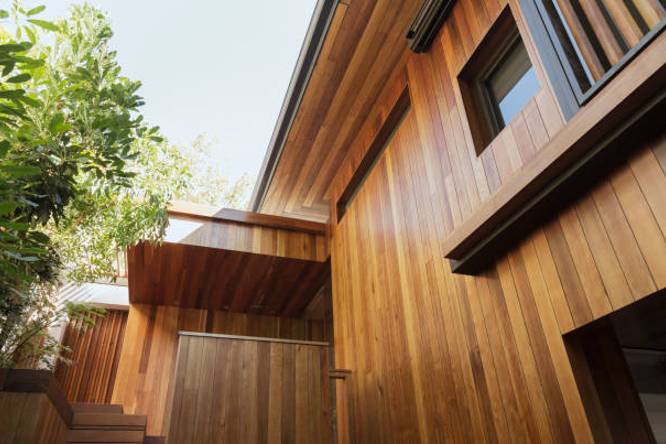
Wood is a renewable resource that provides beautiful and durable exterior finishing. It has been praised by designers not only for its beauty but also for its ease of cutting, shaping, and installation.
Pros
- Easy to cut, shape, and install
- Natural aesthetics
- Very versatile
- If properly maintained, can last for up to 100 years
Cons
- Can be very expensive to install, depending on the quality of the wood to be used
- It is vulnerable to rot, termites, and woodpeckers
3. Fiber cement siding or Hardie
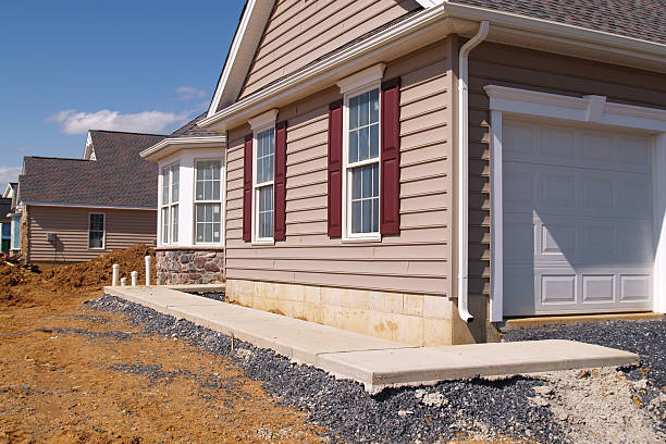
Fiber cement siding offers you a slightly rigid, durable, and low-maintenance material that serves as great protection for the building. Just like cement, fiber cement siding is a very durable exterior finish. It is also resistant to rot and wood-boring insects such as termites.
Pros
- Low maintenance
- It is versatile
- Easy to paint
- It is flame retardant
- Very effective against sun damage
Cons
- Very expensive
- Requires special installation tools and techniques
- Needs to be refinished every 15 years
4. Stucco
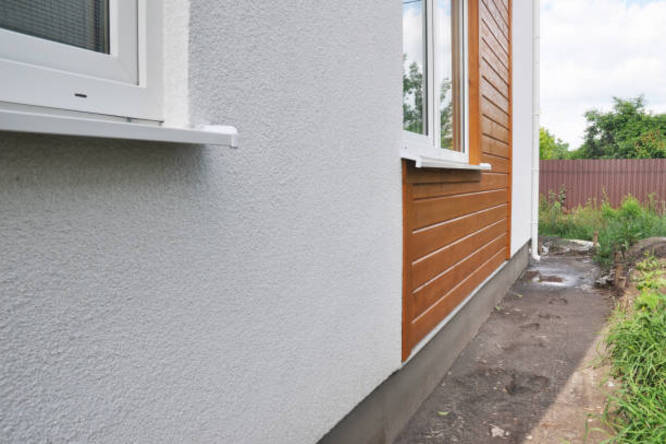
Although stucco is ancient, it remains popular because of its timeless and unique aesthetics and durability. Made of cement, sand, lime, and water, stucco is praised because of its ability to expand and contract.
Pros
- Unique aesthetics
- Effective for preventing cracking and chipping
- Very durable
- Acts as a case covering the house, also serving as an extra layer of insulation
Cons
- Installation and labor costs can be very expensive
- It is not ideal for areas with a wetter climate
5. Brick
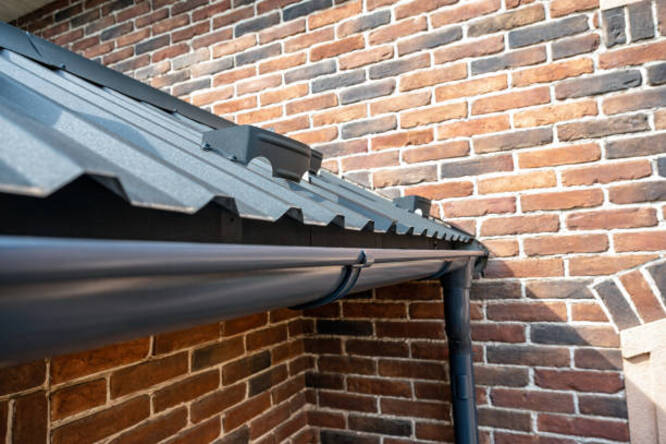
Through the decade, brick has become a more popular choice because it gives the home a classic look. Aside from aesthetics, it is also a popular choice because it is fire, mold, and rot-resistant, which impacts its durability.
Pros
- Classical aesthetic
- Very durable
- It requires very little maintenance yet is still bound to last for a very long time
- Resistant to mold and rot
Cons
- Expensive
- Limited color options
- It has to be installed by a professional else the durability might be affected
6. Natural stone
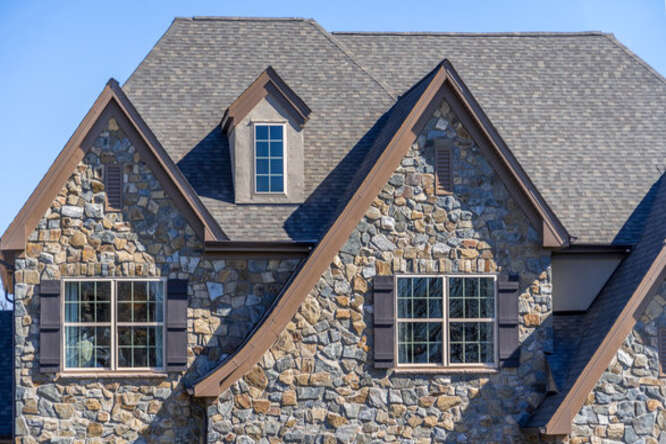
This type of siding consists of thin layers of stones used as cladding for the outside of a house or building. This type of siding can also be used for the interior of the house due to its unique texture and aesthetics.
Pros
- Requires little maintenance
- It has a natural, yet unrivaled beauty
- Can be used both indoors and outdoor
- It is weather and fire-resistant
Cons
- Can take a long time to install properly
- Installation might be very expensive
- Using any strong sealing product on the surface may damage it
7. Synthetic stone
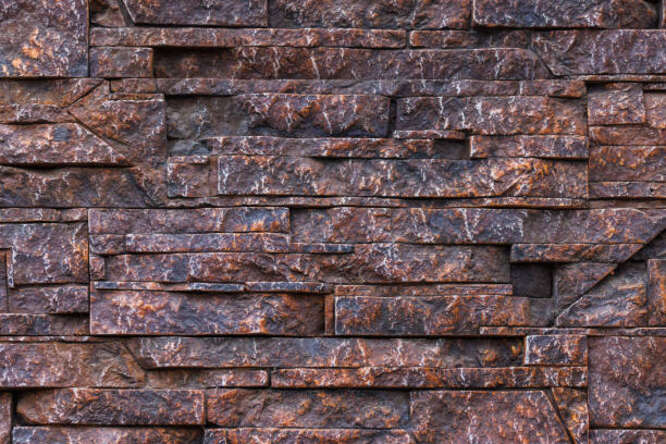
Synthetic stone (also known as faux stone) is a man-made material made to replicate the looks of natural stone. However, it can come in modified shapes, sizes, and color gradations.
Pros
- It serves as a cheaper alternative to natural stone
- It is also easier and less expensive to install
- It is a great choice for chimney exteriors and lower portions of walls
Cons
- Although it costs less than natural stone, it is still an expensive option
- Since it is synthetic stone, it is less structurally sound when compared to natural stone
8. Metal siding
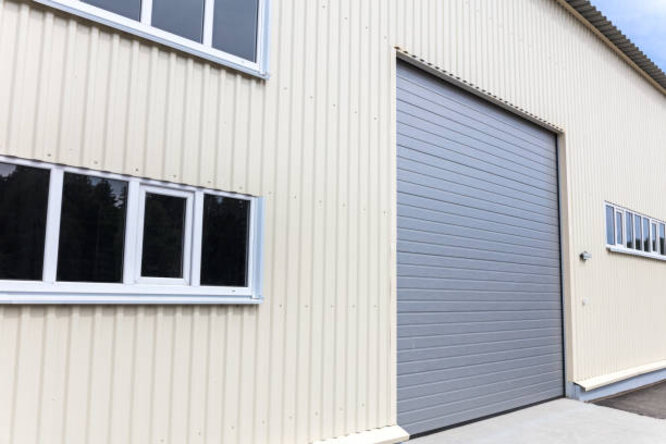
Another appealing type of exterior finishing is metal siding. This is mainly because of the ease of installation, durability, and strength or ability to protect the home from the elements. Metal siding can either be aluminum or steel.
Pros
- Extremely durable
- Little or no maintenance requirement
- Fire resistance
- No rot, rust, or blistering
- Resistant to termites and other pests
Cons
- Very expensive
- Prone to dents
- Replacement can be tricky as even making the slightest mistake may result in you changing the entire panel
FAQs
What is the most commonly used type of interior finishing?
Stucco and Vinyl are the most used types of interior finishing because of their durability and versatility.
What is the cheapest type of exterior finishing for a house?
Vinyl happens to be the most inexpensive type of exterior finish.
What is the most expensive type of exterior finishing for a house?
Natural stone is the most expensive type of exterior finishing.
Conclusion – Choosing the right exterior finishing for your house
The exterior finishing that is best for you strikes a balance between affordability, durability, appeal, and performance. But remember that the type you choose will not only give your home a distinctive personality but also act as the line of defense against the elements.
It is generally believed that Natural Stone, Stucco, and Vinyl are some of the best types because they are all durable. If you are on a tight budget, however, you may find Vinyl to be the perfect choice for you. Still confused, contact us today let’s get the best exterior finishing for your home.
Thanks for your time.